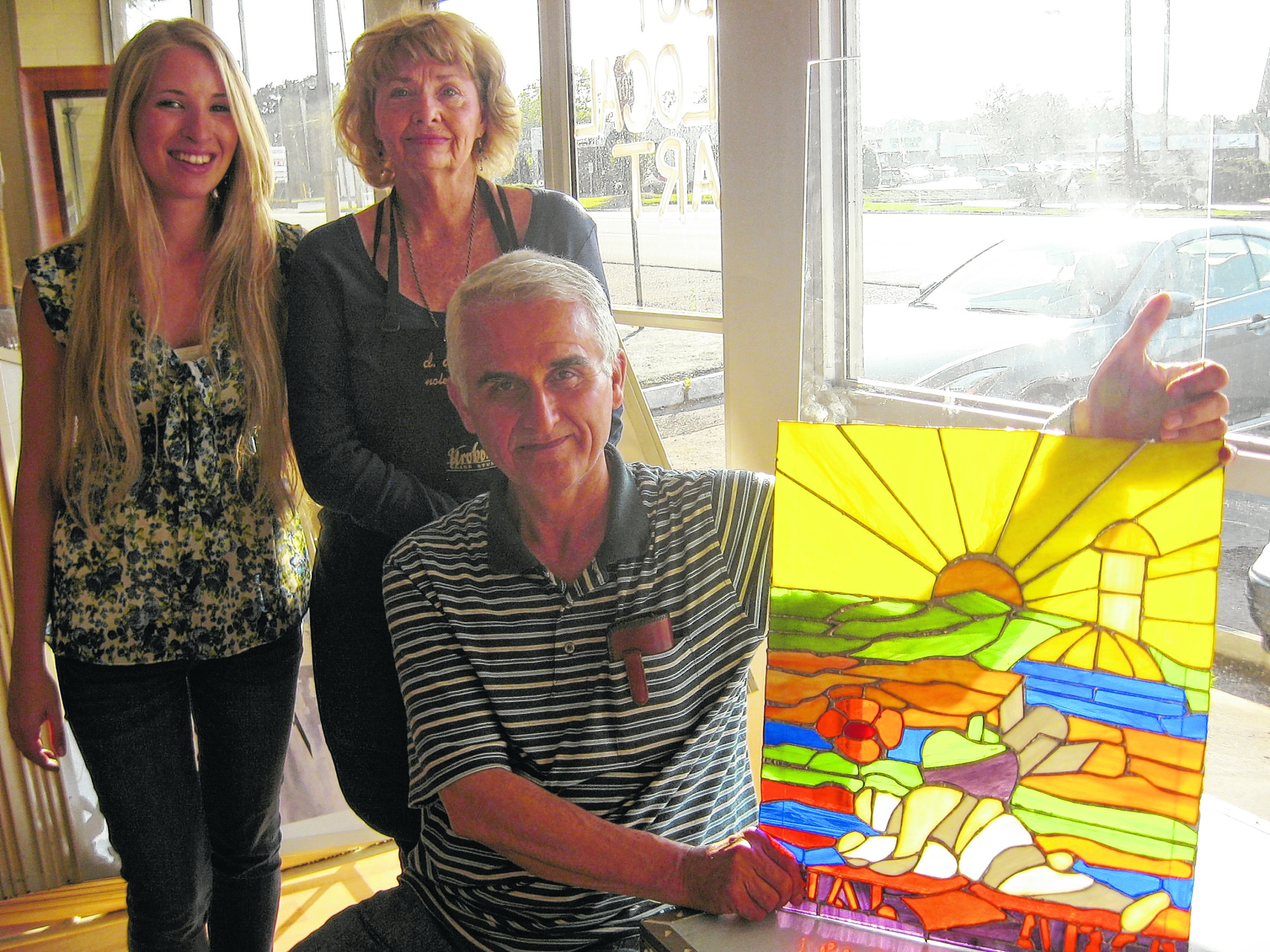Whenever he sees apples, Kurdistan transplant Kordo Ali thinks of the March 1988 day when he said a chemical bomb was detonated by then-dictator Saddam Hussein's followers in Halbaca. He said the deadly gas smelled like apples to draw people out to their deaths.
Sitting in his Hixson home, Ali can still hear the people cry out from his homeland.
The bomb took the lives of 5,000 men, women and children.
"This is part my life and part my heart," said Ali, referring to the stained glass portrayal of that spring day titled "Halabca" which he recently completed. "They killed 5,000 people in two hours by chemical weapons that smell like apples. People smell it and fall down."
Ali said even though he was living 55 miles away in Sulaymaniyah, he lost a lot of friends and family in the bombing. He said the few survivors now suffer from extreme medical problems as a result of exposure to the chemical warfare.
"I lost 41 people I knew including kids, women, old people and pregnant people," said Ali. "I am part of this piece of art. Like American people don't forget 9-11, we don't forget what happened in Halabca. Never ever. No one in the world took care of that problem. It was like something secret. Saddam destroyed the city."
What happened in Halabca is proof that Saddam made chemical weapons of mass destruction, according to Ali, who used his Arabic, Kurdish and English skills to assist in translating for the U.S. Army in Iraq. He said he loves American soldiers for freeing his country of Saddam Hussein.
Halbaca has since been rebuilt, but Ali opted to move to the United States in 1996. He moved to Chattanooga 15 years ago.
After working on his stained glass piece for six weeks, Ali plans to send the piece overseas to Kurdistan as a present to his homeland. He is making two more stained glass creations to go along with it.
"This is the most significant project any student has ever brought me," said Reflections Art Gallery artist-in-residence Daisy Pratt, who has a German glass apprenticeship and helped Ali craft his piece at the gallery. "I'm proud to be a part of telling the truth through history. To me, [Ali's artwork] it's a triumph of art. It's someone telling their journey and their nation's history."
In Ali's stained glass artistic rendering, the central figure is Kurdistan's Omary Kawar and his child, who both perished in Halabca from the fumes of the chemical bomb. The father wraps his arms around his child, covering it from the fumes. Shown above the figures is a large ray of sunshine representing the hope that still exists in Halabca for a bright future.
In the middle of the piece sits an apple with the tail of a bomb sticking out.
"We have a future in Kurdistan," said Ali. "We work for democracy for the whole country to be like the United States."
He is working on another stained glass piece with the Incredible Hulk holding the flag of Kurdistan. His third stained glass creation is of the Kurdistan Parliament building.
Ali is married to artist Nahala, who makes abstract canvas paintings. He has a bachelor's degree in painting from the Academy of Fine Arts in Iraq.
